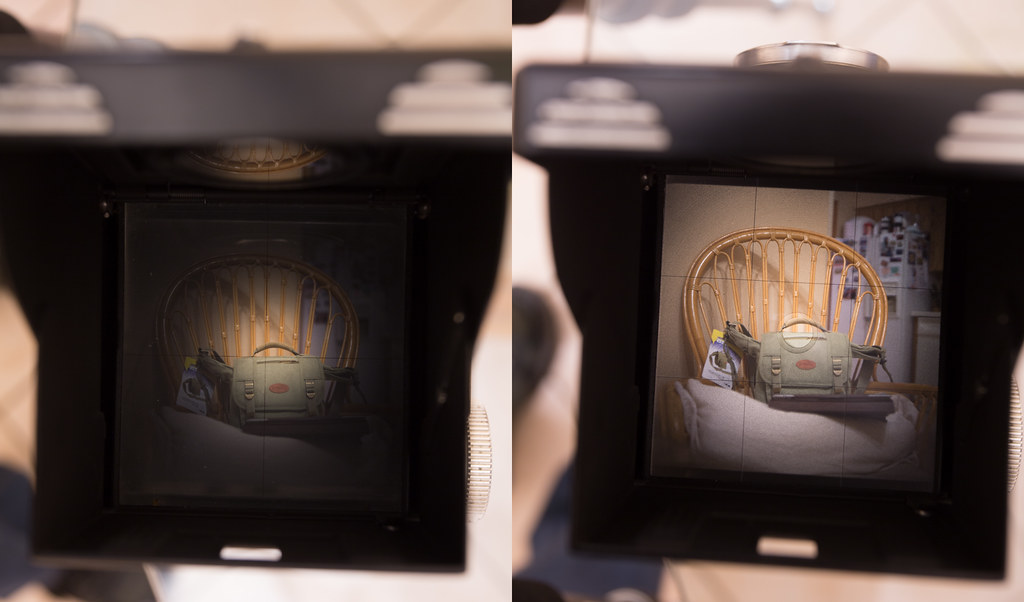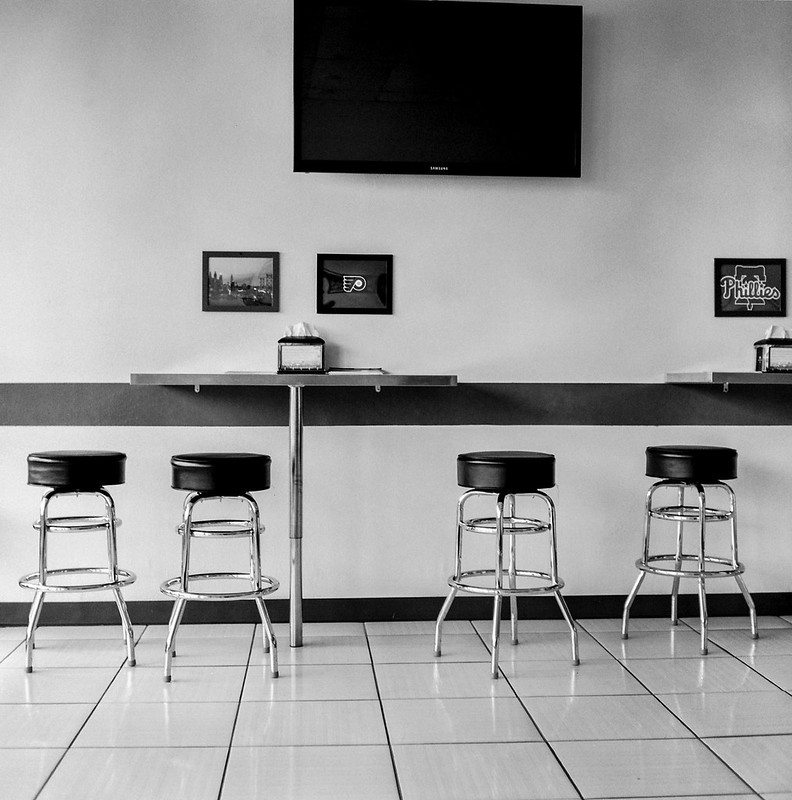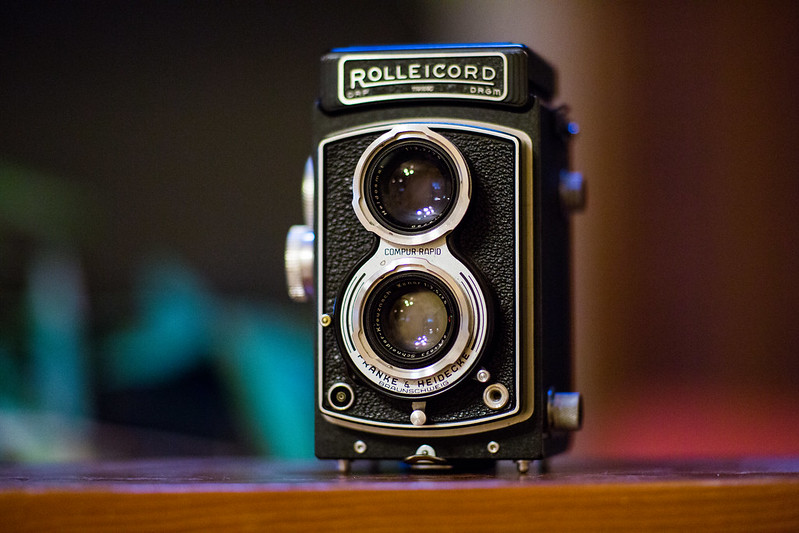 |
| My Rolleicord III, sitting there being all awesome. |
At the time, I had just dug myself even deeper into the digital camp by selling my Canon EOS 5D Mark II and buying the updated Mark III, but I was excited by the unexpected gift and couldn't wait to try it out (even though I knew absolutely nothing about Rollei). Medium format went off my radar when I went digital in 2003 but ever since the day I bought my first 35mm SLR in 1992, it had been a dream of mine. If I had known that quality, affordable 120 cameras like this were around I probably would have started a long time ago!
If you are unfamiliar with twin lens reflex cameras, their operation and build is relatively simple compared to SLR's. The lower "taking lens" projects the image onto the film when
the shutter opens, and the light from the upper "viewing lens" is projected upward via a 45-degree mirror onto a matte viewing surface which is used to focus and compose.
The advantages of this design are primarily due to the small number of moving parts, and with no mirror to flip out of the way during each exposure, there is no viewfinder blackout like you would see in an SLR. Fewer moving parts also means lower rate of mechanical failures, and for that reason there are a huge number of old TLR's still in operation after many decades of use. This also keeps the prices relatively low in many cases, making TLR's a great inexpensive entry point into medium format photography. This particular Rolleicord in working condition currently goes for $100-$150 depending on how clean it is, and even a more fully-featured Mamiya C330 Pro can be found for under $300 in great condition, and the excellent C220 is even cheaper than that.
The Rolleicord line of TLRs was basically a toned-down version of the popular, more expensive Rolleiflex line. It was marketed as more of an amateur camera, losing a number of convenience features and options but still retaining the quality of its big brother. This particular model (the Rolleicord III) was produced from 1950 to 1953 with a total of 87,000 made. Based on the serial number, I estimate that this one was manufactured around 1951. It sports a Schneider Xenar 75mm f/3.5 taking lens and Heidosmat 75mm f/3.2 viewing lens with a continuous aperture selection from f/3.5 to f/22 and continuous shutter speed selection from 1 second to 1/500, plus bulb. Compared to its contemporary Rolleiflex, it misses out on the optional Zeiss taking lens and a slightly faster f/2.8 viewing lens. It loses the crank-style film advance (which also cocks the shutter for the next frame) and instead has a knob film advance that requires cocking the shutter independently. The Rolleicord also lacks the Rolleiflex's double exposure prevention (the mechanism that ensures that you have advanced to the next empty frame before allowing you to take another photo -- something that would have come in handy when I was shooting my first roll through the camera).
 |
| Left: original focus screen Right: the new Rick Oleson focus screen |
 |
| The first photo I ever took with the Rolleicord. |
There is no light meter on the Rolleicord, so you're going to want to bring an incident light meter with you. In a pinch, there are free mobile phone apps that will attempt to act as a reflective meter. I haven't found them to be particularly accurate, but in challenging lighting situations it's probably better than sunny/16 or the guidelines on the back of the camera
Updates will of course be forthcoming as I have more time to shoot with it. Unfortunately I haven't had much of a chance due to a heavy work travel schedule, but I'm considering bringing it with me on my upcoming trip, so maybe I'll some some additional photos to add when I get back.
--------
Update: I brought the Rolleicord on my next trip to Montreal, which you can read about here if you like. The camera has since developed an intermittent film advance issue, so I've stopped using it until I can get it repaired.

I love learning about different types of cameras.
ReplyDelete